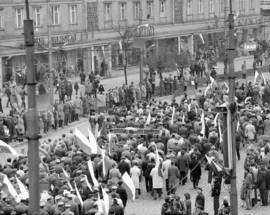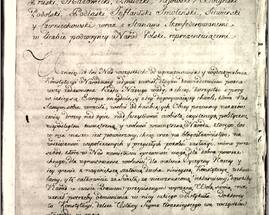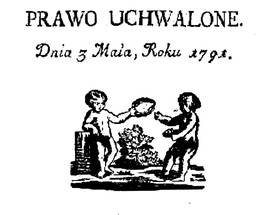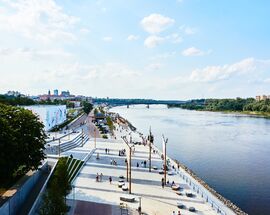Spring is officially here, bringing with it Poland's ‘National Holiday Season,' which kicks off the warmer months every year with a few much-awaited holidays: May 1 (Labor Day) and May 3 (Constitution Day), collectively known as Majówka.

These two holidays are traditionally a time for Poles to get out of the city, get onto a river somewhere, go camp in the mountains, or just lounge on the beach. For those who stay in the city, there are plenty of offerings, too, from dancing to special deals at restaurants, to festivals (more on that below). But this year is an especially good time for Majówka. Not only do the days fall on a Wednesday and a Friday (meaning almost everyone is taking Thursday off, too). But the weather is super warm, super sunny and all-around perfect. So let's dive into the history of these days and -- crucially -- all the ways you can celebrate.
What is Majówka?
First up is May 1st, otherwise known as Labour Day, and a direct leftover from the communist lurch. In those days it was dominated by parades, concerts and coordinated gatherings to celebrate the glories of socialism, and while Poland was gradually edging further and further away from Moscow’s manipulation, the people were damned if they were going to give up a well-deserved day off from work. Despite the political and social changes Poland has since experienced, and the sour memories of Stalinist posturing, the post-communist government opted to keep the plebiscite happy and maintain May 1st as a public holiday – only without any red flag and party badge nonsense. As such, it resembles the American Labour Day, which is basically a day off for the sake of having a day off. Amen to that.
Adding to the good news is that Poles find themselves with another day off before Labour Day has even become a memory. May 3rd is Constitution Day, which in contrast to the history of May 1st, is one of the most important annual celebrations of Polish independence and nationalism. It was on this day that the Polish Sejm (parliament) proudly signed what was to become Europe’s first national constitution (and second in the world after the US) in Warsaw’s Royal Castle back in 1791. A ground-breaking document that introduced political equality between the bourgeoisie and the nobility, it also placed the peasant class under the protection of the government, thereby guaranteeing them safety from any nasty aristocratic masters. Stanisław August Poniatowski, the Polish king at that time, described the constitution as “founded principally on those of England and the United States, but avoiding the faults and errors of both.” These sweeping social reforms were welcomed by most Poles, and it was such a landmark event it was immediately declared a national holiday. Not everyone was happy however, namely Poland’s bullying neighbours. Fearing the economic, military and patriotic resurgence of a country so long kowtowed by them, Russian troops invaded Polish soil and in 1795 Poland began what would become 123 years of partitions. The May 3rd holiday was outlawed and the short-lived constitution was described by two of its co-authors, Ignacy Potocki and Hugo Kołłątaj, as "the last will and testament of the expiring country.” When Poland regained independence in 1918 May 3rd once more became a day of national celebration, though was banned again by the Nazis, and then the communists who followed. The holiday was restored to its current mantle in 1990, and today is very much seen as a triumph of the common good over repression.
Dance, Hear Music, Be Merry!
There are plenty of ways to take in the good weather and the time off work this week, starting with "Dancing Queen" Shows held at the Multimedia Fountain Park Wednesday through Saturday. Listen to some music (seriously, is there anything more uplifting than Abba?), see some lights and get in the spirit of the season. If you happen to miss this one, no worries -- this event kicks off the Multimedia Fountain Park's summer season, so you can check back for more events in the coming months.
If you're more into daytime events -- specifically festivals and picnics -- there's plenty of offerings, too. On May 1, the city is hosting a European Festival on Krakowskie Przedmieście from 12:00 p.m. to 6:00 p.m., featuring concerts and street performances up and down the popular route. The route itself is divided into zones so make sure to roam the whole street Wednesday afternoon and catch as much action as you can!
For those who are more into staying in one spot than roaming, check out Łazienki Park's picnic also on May 1, which will include free tours of the beautiful park buildings, concerts and more. More Majówka happenings will be held at the park through May 8, so make sure to check out their website for more.

Those are the big Majówka-specific events, but there's plenty else to do in the city now that the warm weather has picked up. Grab a drink atop the beloved (and recently reopened for the season) rooftop bar, Ether. Head down to Saska Beach or really any part of the banks of the Vistula River, where Warszawians will be gathering every night this week (sometimes, on the Praga side of the beach, you can catch fire juggling shows). If you're more into drinking a cocktail on a barge, head to the other side of the river, to the Vistula River Boulevards, where you'll find plenty of boats that have just opened for the season, offering food, drinks, live music and river views on board.

Additionally, many bars, restaurants and cafes will offer some kind of Majówka deals this week, so be sure to look out for those when you stop by for some sustenance.
Overall, this is the week/weekend to get in that good spring mood, take in some sun and enjoy the city!












Comments